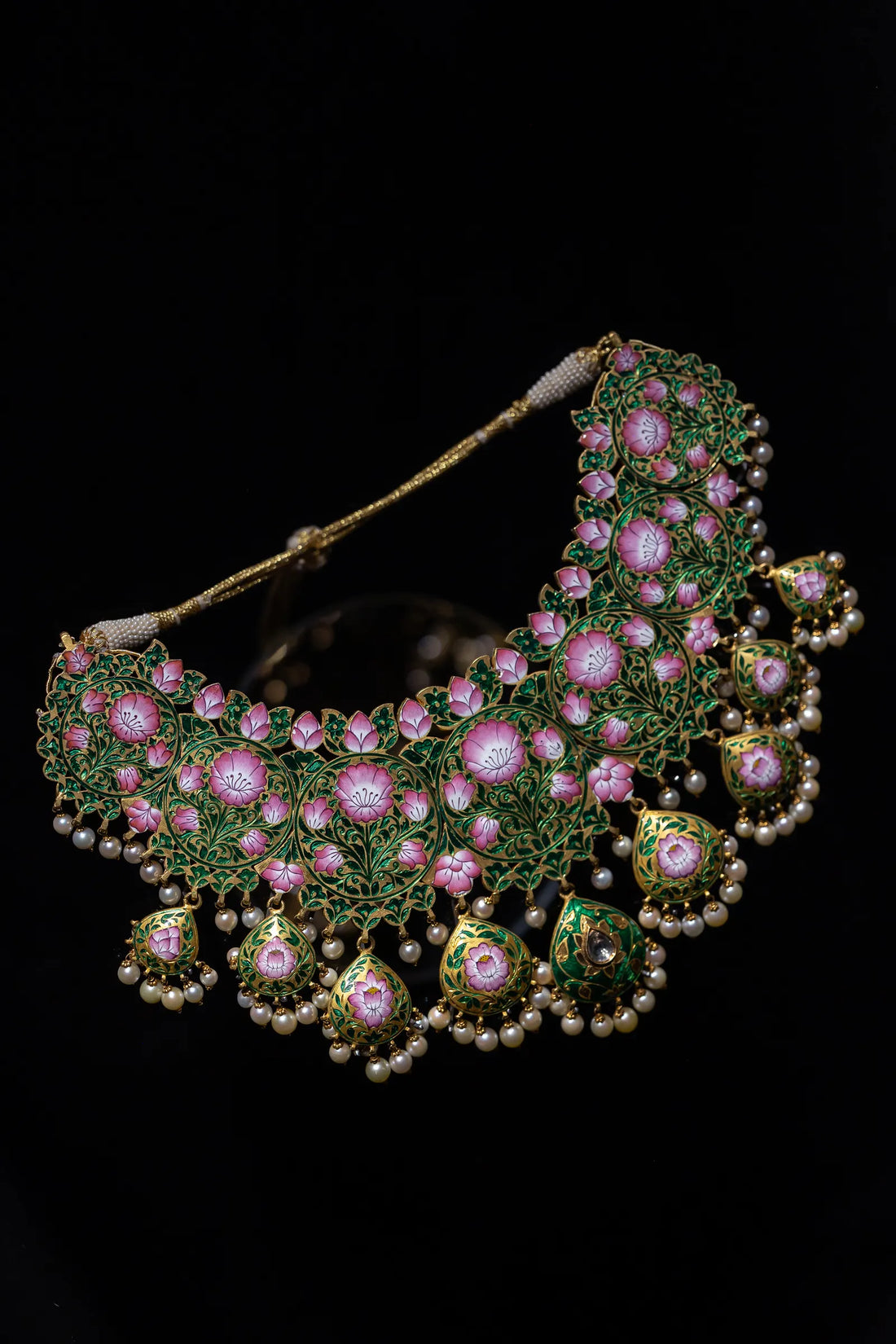
Meenakari: India's Ancient Enamel Art
Meenakari = "meena" meaning "paradise" and "kari" meaning "work on an object."
The art for of Meenakari originated in Persia, and was brought to India in the sixteenth century, first entering the country in Goa. It become popular in Rajasthan when Sawai Man Singh brought meenakars from the Mughal courts to Jaipur to practice their craft.

Raja Sawai Man Singh I
The process starts by pressing a metal sheet on a mould to create an engraved design. Then, artisans mix crushed glass with a liquid made of pomengranate seeds and water, and apply this colored liquid to the metal using thin needles, spokes or brushes. Lastly, the jewelry is heated to fuse the enamel to the base metal, and later boiled in a mild acid to increase lustre.





Photos from Sakshi Gambhir, IDC, IIT Bombay


Modern meenakari jewelry by Gehna and Sunita Shekhawat.
In fact, Sunita Shekhawat even funded the Museum of Meenakari Heritage in Jaipur - tracing the journey of enamelling from Renaissance Europe to India.



